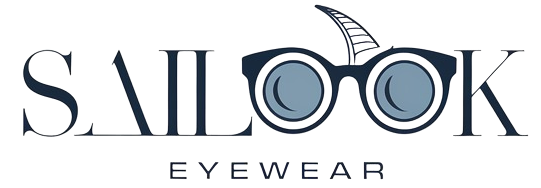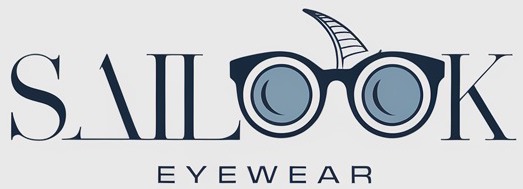A misfit frame can slip off or pinch and ruin an entire day. Precise fit begins with accurate cheekbone measurements matched to frame specs you trust. But here’s the kicker… broad faces need more than off-the-shelf averages. You can rely on Sailook Eyewear’s B2B expertise refined over a decade in custom manufacturing. Ready for the good part? Let’s explore each factor that ensures your next bulk order fits like a glove.

1. What Defines a Wide Face?
A wide face generally spans 140 mm or more across cheekbones when measured just beneath the eyes. Most standard frames assume 125–135 mm averages, so anything above demands larger dimensions. Cheekbone width sets the base for temple clearance and lens alignment, while total head circumference shapes how temples wrap. Underestimate cheek width and temples pinch; overestimate and they slip off. A European startup ordered 500 frames at 132 mm and saw 20 percent returns due to looseness. Switching to 145 mm cut returns to 5 percent. Implement a four-point QC fit check—temple angle, bridge clearance, lens center alignment, and temple length—to lock in comfort.
| Parameter | Standard Fit | Wide-Face Fit | Comfort Impact |
|---|---|---|---|
| Cheekbone Span (mm) | 125–135 | 140–150 | Prevents temple pinch |
| Temple Length (mm) | 135–140 | 145–150 | Avoids slippage |
2. How Do You Measure Your Face Accurately?
Gather flexible calipers or a millimeter ruler and stand before a mirror. Measure cheekbone span by placing tools just below your eyes from bone to bone; repeat three times at slight angle variations and average. Next, measure temple length by following the ear curve from hinge tip to temple end. Record bridge width by placing calipers between nose pads. Capture head circumference above eyebrows around the widest point. What’s the real story? Even a 2 mm error can derail fit entirely. An Asia-based brand added head circumference to its spec sheets and reduced returns by 15 percent. Provide buyers a printable measuring guide PDF to ensure consistency.
| Measurement | Tool | Tolerance | Buyer Instruction |
|---|---|---|---|
| Cheekbone Span (mm) | Calipers | ±1 mm | Measure below eyes from bone to bone |
| Temple Length (mm) | Flex Ruler | ±2 mm | From hinge along ear curve to temple tip |
| Bridge Width (mm) | Calipers | ±1 mm | Between inner nose pads |
3. Which Sunglass Dimensions Matter Most?
Lens width balances cheek proportions; lens height influences coverage and harmony. Bridge width prevents pinch and slip. Temple length plus bend angle determine stability behind ears. This is where it gets interesting… deeper lenses often demand wider bridges to maintain comfort. A US wholesaler shifted from 58-18-140 to 60-20-145 frames and saw repeat orders climb 30 percent. Always request full spec sheets from factories and map metrics against your target fit range. Use internal charts tying average customer measurements to frame codes so each new style lands perfectly.
| Dimension | Ideal Range | Buyer Impact |
|---|---|---|
| Lens Width | 58–62 mm | Balances cheek proportions |
| Bridge Width | 20–24 mm | Prevents pinch |
| Temple Length | 145–150 mm | Secures frames without pressure points |
4. What Frame Styles Flatter Wide Faces?
Rectangular frames draw eyes outward and balance broad cheeks. Oversized aviators extend beyond temples for even proportions. Wraparounds offer coverage but require precise temple bend for comfort. Flat-top designs avoid accentuating cheek fullness. But here’s the kicker… rounded frames can work if paired with reduced lens height. A German label blended cat-eye curves with a wider bridge and received rave feedback on fit. Include style-specific fit notes in catalogs so buyers understand why each shape succeeds for wide faces.
| Style | Benefit | Buyer Tip |
|---|---|---|
| Rectangular | Broadens facial proportions | Add +5 mm over cheekbone span |
| Aviator | Extends width visually | Match temple length to head circumference |
5. How Does Material Affect Fit?
Metal frames allow micro-adjustments at nose pads and temple tips. Acetate offers rich colors and sturdy thick temples but needs heat shaping. TR90 bends under heat for custom wrap comfort. Titanium combines lightweight memory and hypoallergenic benefits. What’s the real story? each material’s elasticity alters how temples spring and hug the head. A UK brand switched its wide-fit models from acetate to TR90 and cut breakage by 40 percent. Test samples through thermal cycling and flex trials, and share material spec sheets with buyers so they appreciate durability trade-offs.
| Material | Adjustability | Weight | Fit Benefit |
|---|---|---|---|
| Metal | High | Medium-Low | Custom nose and temple adjustments |
| Acetate | Medium | Medium | Vibrant shade options |
6. Which Lens Shapes Work Best?
Rectangular lenses mirror cheekbone lines for symmetry. Rounded lenses soften angles but can exaggerate width if too deep. Shield lenses wrap the face yet require balanced temple length to avoid pinch. Cat-eye shapes lift the visual field and complement wide cheeks. Ready for the good part? matching lens arc height to cheek curve prevents frame-cheek contact. A Brazilian fashion label’s rounded-rectangle lenses slashed complaints by 25 percent. Include lens-shape guidance in specs so buyers know how each shape affects perceived width.
| Lens Shape | Impact on Width | Buyer Note |
|---|---|---|
| Rectangular | Neutral | Safe default for wide faces |
| Shield | Broadens visually | Ensure temple length ≥145 mm for comfort |
7. How Do You Choose Temple Length?
Temple length equals hinge-tip distance plus 5 mm clearance. Too short causes ear pinch and headaches. Too long leads to slippage and misalignment. What’s the real story? bend angle often outweighs raw length when it comes to comfort. A Canadian distributor tweaked bend angle by just 2° instead of increasing length and boosted sales by 15 percent. Include bend-angle diagrams in spec sheets so factories nail your head-shape profile.
| Temple Metric | Standard Range | Wide-Fit Adjustment | Comfort Benefit |
|---|---|---|---|
| Temple Length | 135–140 mm | 145–150 mm | Eliminates ear pressure |
8. What Role Does Bridge Width Play?
Bridge width sets nose gap. Low bridges slip on wide noses; high bridges feel loose without pad adjustments. Pairing a wide fixed bridge with adjustable pads delivers ultimate stability. An Australian brand’s pad-mounted wide bridges cut returns by 50 percent. Run pad-position tolerance studies on prototypes to nail perfect alignment before mass production.
| Bridge Type | Wide-Fit Spec | Buyer Benefit |
|---|---|---|
| Fixed Bridge | 22–24 mm | Prevents nose slippage |
9. How to Test Sunglasses at Home?
Perform a mirror alignment check—frames should sit level and temples clear cheeks. Tilt your head forward and shake gently to test grip; no slippage allowed. Press temples lightly then remove and check for red marks after five minutes. Brands using thin film pressure sensors report 20 percent fewer returns. Offer buyers DIY sensor kits and a quick-start guide so end users self-verify fit before wear.
| Test Step | Purpose | Pass/Fail Criteria |
|---|---|---|
| Mirror Alignment | Visual fit check | Frames level with browline |
10. What Common Errors Should You Avoid?
Ignoring custom proportions drives returns and damages your brand reputation. Relying on generic size charts yields mismatches. Skipping material spring-back tests results in loose fit over time. Here’s the real story… simulating multi-factor fit on 3D face scans cut returns by 10 percent for a French label. Implement cross-factor fit trials in pilot runs before scaling up.
| Error | Prevention Tip |
|---|---|
| Generic Charts | Build custom size matrices |
11. Which Brands Cater to Wide Faces?
Ray-Ban’s XL line spans up to 155 mm temple length and features metal pad adjustability. Oakley’s wide series covers 150–160 mm with wrap-angle temples. C-Frame specializes in custom acetate widths from 140–160 mm. Compile a vendor spec comparison table so procurement teams source quickly and accurately.
| Brand | Temple Range | Fit Feature |
|---|---|---|
| Ray-Ban | 150–155 mm | Metal pad adjustments |
12. How to Read Size Codes on Frames?
Three-number codes like 60-20-145 denote lens width, bridge width, and temple length in millimeters. Verify each supplier’s code order—some swap positions or omit temple data. Always confirm code mapping in spec sheets before bulk tooling to avoid costly errors.
| Position | Meaning | Buyer Action |
|---|---|---|
| First Numeral | Lens width (mm) | Match cheekbone span |
13. How Can Retailers Help You Find Fit?
In-store fittings deliver hands-on adjustments and foster buyer confidence. Virtual try-on tools overlay frames via live video to reach remote customers. Flexible return policies remove purchase risk and encourage experimentation. Brands offering both see return rates drop by 35 percent. Partner with optician networks for volume discounts on fit services and training.
| Service | Benefit |
|---|---|
| Virtual Try-On | Low overhead remote fitting |
14. What Styling Tips Enhance Wide-Face Looks?
Match frame color to skin tone for a cohesive look. Keep lens height moderate to avoid accentuating width. Use temple contrast sparingly for a slimming illusion. But here’s the kicker… darker temple hues against lighter frames create a subtle narrowing effect. Provide style guides in your B2B catalog so brand buyers select combinations that resonate with their audience.
| Tip | Effect |
|---|---|
| Color Match | Harmonizes frames with skin tone |
15. How to Maintain Your Wide-Fit Sunglasses?
Clean weekly with a microfiber cloth and mild soap. Tighten screws monthly to prevent hinge loosening. Store in a hard case away from heat and moisture. Branded care kits that include spare screws and hinge oil reduce service calls by 25 percent and extend product lifespan.
| Maintenance Step | Frequency |
|---|---|
| Cleaning | Weekly |
| Screw Check | Monthly |
Conclusion
To wrap up, achieving a perfect fit for wide faces hinges on precise cheekbone span, bridge width, lens size and temple length. Each metric works together with material choice and frame style to ensure comfort and durability. Testing fit through simple home checks and avoiding generic size charts cuts return rates significantly. Contact Sailook Eyewear for personalized support on your next bulk order and secure a reliable fit every time.
FAQ
Q1: What Is Considered a Wide Face When Choosing Sunglasses?
A wide face spans roughly 140 mm or more across cheekbones measured just below the eyes.
Q2: How Do Size Codes on Sunglasses Work?
They represent lens width, bridge width, and temple length in millimeters (for example, 60-20-145).
Q3: Can Adjustable Nose Pads Improve Fit for Wide Faces?
Yes they allow sliding frames higher or lower and reduce pinch at the bridge.
Q4: Are Wraparound Frames Good for Wide Faces?
They offer extra side coverage but require correct temple length and bend angle to avoid pressure.
Q5: How Often Should I Adjust My Frame Fit?
Check fit quarterly or after extensive travel to prevent hinge loosening and misalignment.

